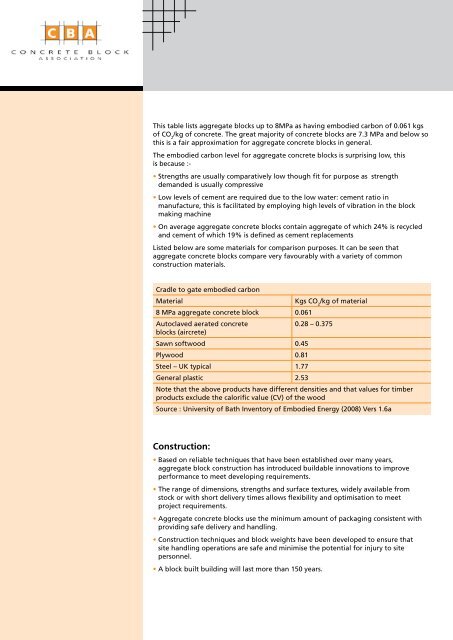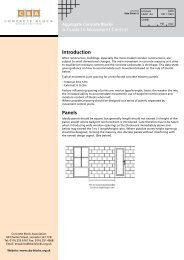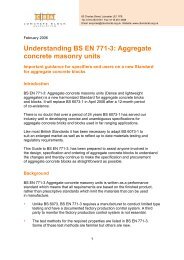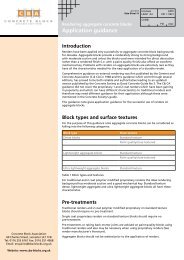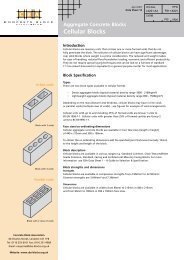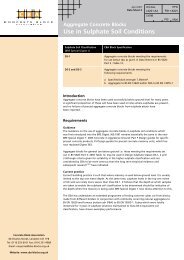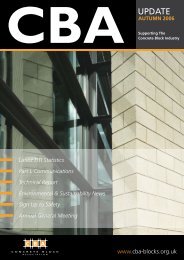Introduction Life Cycle Principles Embodied carbon - Concrete Block ...
Introduction Life Cycle Principles Embodied carbon - Concrete Block ...
Introduction Life Cycle Principles Embodied carbon - Concrete Block ...
You also want an ePaper? Increase the reach of your titles
YUMPU automatically turns print PDFs into web optimized ePapers that Google loves.
This table lists aggregate blocks up to 8MPa as having embodied <strong>carbon</strong> of 0.061 kgs<br />
of CO 2<br />
/kg of concrete. The great majority of concrete blocks are 7.3 MPa and below so<br />
this is a fair approximation for aggregate concrete blocks in general.<br />
The embodied <strong>carbon</strong> level for aggregate concrete blocks is surprising low, this<br />
is because :-<br />
• Strengths are usually comparatively low though fit for purpose as strength<br />
demanded is usually compressive<br />
• Low levels of cement are required due to the low water: cement ratio in<br />
manufacture, this is facilitated by employing high levels of vibration in the block<br />
making machine<br />
• On average aggregate concrete blocks contain aggregate of which 24% is recycled<br />
and cement of which 19% is defined as cement replacements<br />
Listed below are some materials for comparison purposes. It can be seen that<br />
aggregate concrete blocks compare very favourably with a variety of common<br />
construction materials.<br />
Cradle to gate embodied <strong>carbon</strong><br />
Material<br />
Kgs CO 2<br />
/kg of material<br />
8 MPa aggregate concrete block 0.061<br />
Autoclaved aerated concrete<br />
0.28 – 0.375<br />
blocks (aircrete)<br />
Sawn softwood 0.45<br />
Plywood 0.81<br />
Steel – UK typical 1.77<br />
General plastic 2.53<br />
Note that the above products have different densities and that values for timber<br />
products exclude the calorific value (CV) of the wood<br />
Source : University of Bath Inventory of <strong>Embodied</strong> Energy (2008) Vers 1.6a<br />
Construction:<br />
• Based on reliable techniques that have been established over many years,<br />
aggregate block construction has introduced buildable innovations to improve<br />
performance to meet developing requirements.<br />
• The range of dimensions, strengths and surface textures, widely available from<br />
stock or with short delivery times allows flexibility and optimisation to meet<br />
project requirements.<br />
• Aggregate concrete blocks use the minimum amount of packaging consistent with<br />
providing safe delivery and handling.<br />
• Construction techniques and block weights have been developed to ensure that<br />
site handling operations are safe and minimise the potential for injury to site<br />
personnel.<br />
• A block built building will last more than 150 years.


